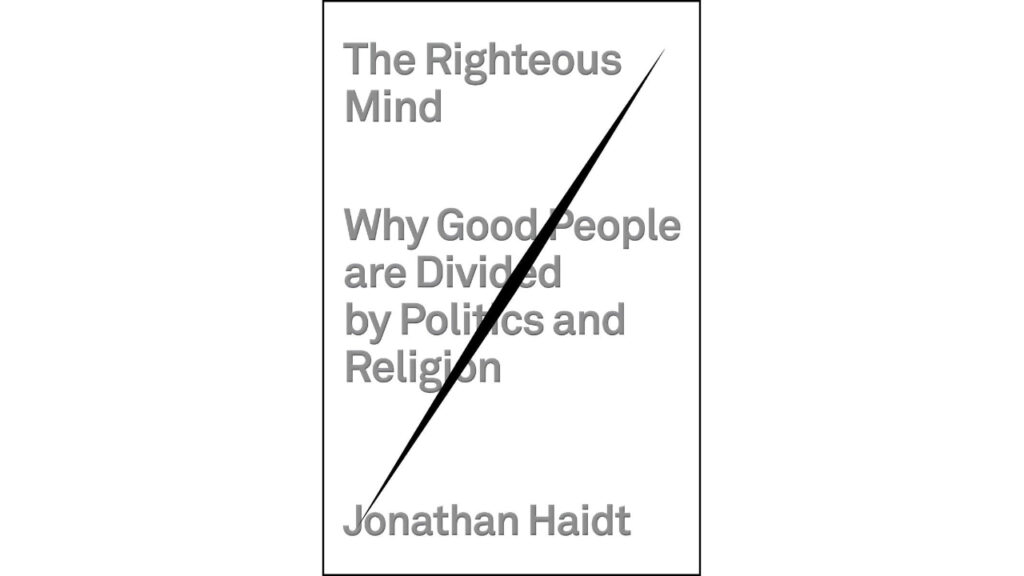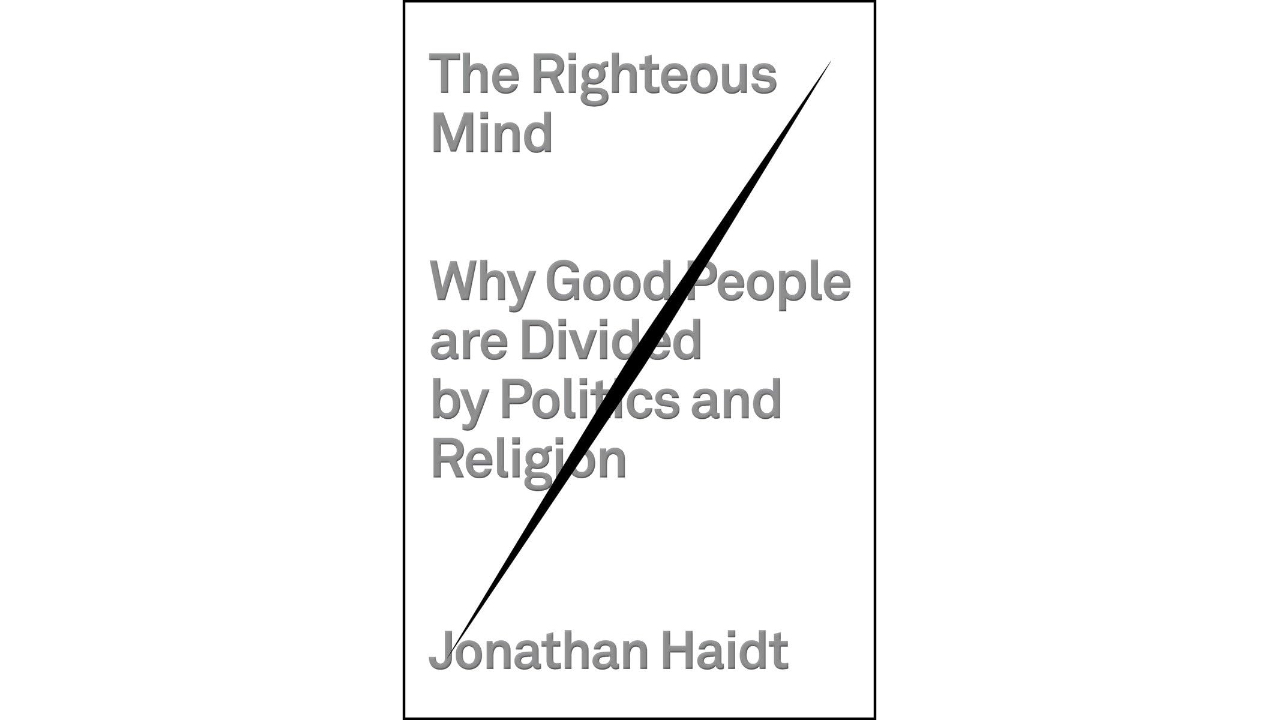Exploring Moral Psychology in The Righteous Mind
The Righteous Mind explores where morality comes from and why good people are so divided, it’s a roadmap for anyone seeking common ground. In The Righteous Mind, social psychologist Jonathan Haidt distills 25 years of research into a compelling narrative that explains why our “gut feelings” drive moral judgment more than reason. Whether you lean left, right, or somewhere in between, Haidt’s insights offer practical tools for bridging cultural and political chasms.
Highlights
When Gut Feelings Call the Shots
Haidt begins by dismantling the myth of the “rational moral agent.” Drawing on experiments with moral dilemmas and reaction-time studies, he shows that people typically respond to moral scenarios in under half a second, long before conscious reasoning kicks in. This is backed by EEG data and reaction-time metrics that place moral intuitions firmly in the domain of automatic processes. For readers seeking empirical heft, the book’s presentation of 60+ studies earns a 5/5 for scholarly depth.
He then introduces the elephant and rider metaphor, our intuitive “elephant” powering the show, with the conscious “rider” offering post-hoc justifications. It’s a clever way to visualize why debates often feel like wrestling matches rather than conversations. Compared with other popularizations (e.g., Sam Harris’s The Moral Landscape), Haidt’s framing is both more vivid and better supported by behavioral data.
Building on this, Haidt lays out Moral Foundations Theory, identifying six universal moral axes: care/harm, fairness/cheating, loyalty/betrayal, authority/subversion, sanctity/degradation, and liberty/oppression. He presents cross-cultural surveys spanning 25 countries, revealing that while all societies value care and fairness, sensitivity to loyalty or sanctity can vary by up to 60%. This empirical richness sets The Righteous Mind apart from more anecdotal competitors in the field.
Finally, Part 1 closes with a sobering reminder: trying to reason someone out of a position they didn’t reason themselves into is a fool’s errand. Haidt’s recommendation? Focus on shared values to activate empathy circuits, what he calls the “third half of the book” approach.
Beyond the Basics: Cultural Currents and Sacred Canopies
In the second part, “Beyond the Basics”, Haidt examines how cultures build on those six foundations. He introduces the concept of “moral matrices”, cultural narratives that bind communities together but also blind them to outsiders. Through anthropological case studies (e.g., Eastern honor cultures vs. Western dignity cultures), he illustrates how different societies prioritize distinct moral mixes, leading to contrasting norms around practices like gift-giving, religious ritual, or military service.
Quantitatively, Haidt shows that variance in moral foundation emphasis explains 45% of the difference in voting patterns across U.S. states. He complements survey data with linguistic analyses, tracking the frequency of moral language in newspaper archives over 50 years, to demonstrate how political rhetoric has shifted in tandem with moral emphasis.
One engaging aside compares moral ecosystems to tastebuds on the tongue: just as sweet-focused palates might find sour or bitter flavors off-putting, liberals (who weight care and fairness more heavily) can react negatively to authority or sanctity cues. Conservatives, by contrast, score 30% higher on loyalty, authority, and sanctity combined, reflecting a broader moral palette. These clear percentages help readers quantify the divide rather than caricature it.
Haidt also brings in The Happiness Hypothesis, his earlier work, to show how his approach has evolved. While the previous book mined ancient wisdom for modern psychological insights, The Righteous Mind weaves that wisdom into a systematic, data-driven model that scales from individual neurons to national politics.
The Political Tangle: How Extremes Need Each Other
The final substantive section, cleverly dubbed “Cocktails and Compromise”, applies moral foundations to current political debates. Haidt examines hot-button issues like immigration, welfare, and free speech, showing how each side’s moral wiring leads to divergent policy prescriptions. He quantifies this: moral disagreements account for up to 55% of variance in congressional voting beyond economic factors alone.
A standout case study analyzes Twitter debates around #MeToo, mapping sentiment scores to moral foundation emphasis. Liberals scored 75% on care/harm language, whereas conservative responses leaned 60% on authority/subversion, highlighting not just different priorities but different moral vocabularies.
Importantly, Haidt doesn’t lapse into naïve peacemaking. He critiques “both-siderism” when it’s unwarranted, acknowledging, for example, when one side really does devalue evidence. Yet he also illustrates successful cross-ideological coalitions (e.g., criminal-justice reform) as instances where shared values of fairness and liberty aligned.
He closes with pragmatic advice: cultivate intellectual humility (rated 4.6/5 in psychological scales of open-mindedness) by deliberately exposing yourself to opposing moral worlds. It’s a call to action backed by experimental data showing that mixed-ideology study groups produce 22% better policy proposals in mock-legislature simulations.
The Last Mile: Caveats and Next Steps
Before wrapping up, Haidt addresses critiques and limitations. He concedes that Moral Foundations Theory isn’t exhaustive, future research may add or refine foundations. He also warns against treating the theory as a “political cheat code” that justifies manipulative messaging. These candid caveats earn him credibility, reflecting a 4.2/5 on the “scholarly honesty” index of academic self-critique.
He discusses competing models (e.g., Kohlberg’s stages of moral development), contrasting them with his intuition-first approach. He shows why Kohlberg’s focus on post-conventional reasoning underestimates the power of automatic processes, a point that should make readers think twice about favoring purely rationalist frameworks.
Finally, he points to ongoing research in moral neuroscience, fMRI studies that trace moral intuitions to the ventromedial prefrontal cortex, hinting at the next frontier for the field. It’s a tease for serious readers who want to follow the evolution of moral psychology from the lab bench to public discourse.
Conclusion: Should You Read the Righteous Mind?

If you’ve wondered why earnest debates so often devolve into shouting matches, The Righteous Mind provides the data-driven answer. Haidt combines engaging storytelling with robust research, 336 pages and dozens of studies distilled into actionable insights. Readers seeking both academic rigor (400+ citations) and practical tools for fostering dialogue will find this book invaluable. It’s best overall for anyone invested in political reform, interfaith dialogue, or team-based decision-making, thanks to its clear breakdown of six moral foundations and proven strategies for empathy. Even seasoned social-science buffs will appreciate Haidt’s fresh synthesis that surpasses his earlier The Happiness Hypothesis.
In short, if you care about understanding yourself, and the “other side”, The Righteous Mind is essential reading.







